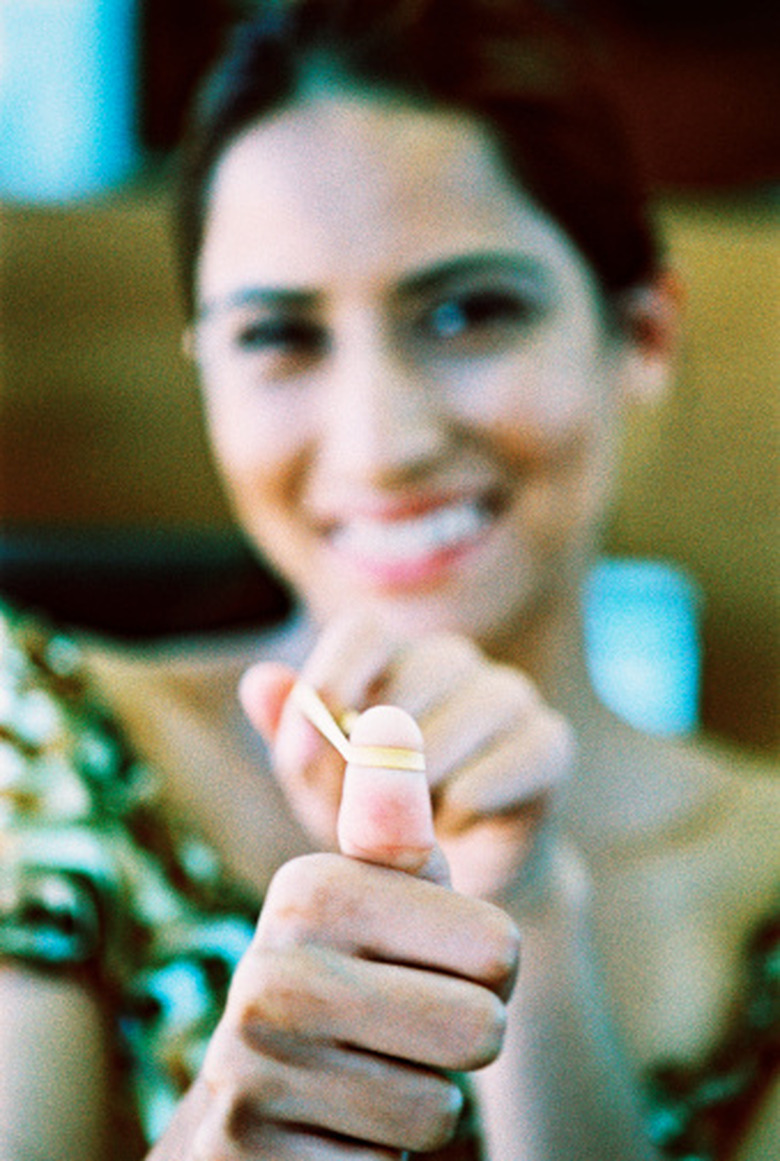Heat And Energy Transfer Experiments
Energy is classified into two main categories: potential and kinetic. Potential energy is the energy contained in an object and is found in many forms, such as chemical, thermal and electrical. Kinetic energy is the energy contained in a moving object. The process by which one form of energy is changed to another form is called energy conversion. This transfer of energy can be shown in a variety of experiments.
Hot Spoons
Hot Spoons
Place a metal spoon into hot water and leave it for a minute. Touch the end of the spoon not immersed in the water. Repeat this with spoons made of different materials, such as plastic, aluminum, stainless steel and wood. Determine which material grew the hottest in the water. Conduction is the transfer of thermal energy, or heat, between substances because of their temperature differences. Thermal energy is transferred from an area of higher temperature to one that is lower. Metals are better conductors than plastics, so when you place the spoons in the hot water, the high temperature of the water is easily transferred to the lower temperature metal spoon.
Cooling Ice Cream
Cooling Ice Cream
Heat transfer can cause cold substances to feel colder. Place ice cream into two bowls. Sample the ice cream in the first bowl. Note how cold it feels in your mouth. Pour milk over the ice cream in the second bowl and taste it. It feels colder because of the transfer of heat. Ice cream feels cold because it has less heat than your mouth. The faster the heat moves away from the inside of your mouth into the ice cream, the colder the ice cream feels. Ice cream has bubbles that act as insulation. Milk doesn't have these bubbles, so it makes a better conductor, or pathway, for heat to move through it. The coating of milk on the second bowl of ice cream carries the heat from your mouth to the ice cream more rapidly than the ice cream alone, producing a colder sensation.
Transferring Kinetic Energy
Transferring Kinetic Energy
Scatter six pennies on a flat surface to represent atoms or molecules within a substance. Place one penny six inches away from the rest. Shoot this penny with your finger toward the other coins. The single penny represents an atom or molecule containing more kinetic energy than the other pennies. The changes in the pennies when hit show a transfer of energy from the moving coin to the group. Shooting the coin causes it to move. It hits the stationary coins, transferring its energy to them, and they move as well. This transfer also causes the penny you shot to stop.
Heat Absorption
Heat Absorption
Demonstrate heat absorption in an experiment using solar energy. Place an ice cube on six differently colored pieces of paper. Use black and white and then four other colors, such as blue, red, yellow and green. Place the cards outside in the sun and observe which melts first and last. The cube on the black paper will melt the fastest because black absorbs more light than the other colors. The cube on the white paper will melt the slowest because white reflects light rather than absorbing it. When the sunlight is absorbed, the solar energy is converted to heat, which melts the ice cubes.
References
Cite This Article
MLA
Miller, Renee. "Heat And Energy Transfer Experiments" sciencing.com, https://www.sciencing.com/heat-energy-transfer-experiments-8294154/. 24 April 2017.
APA
Miller, Renee. (2017, April 24). Heat And Energy Transfer Experiments. sciencing.com. Retrieved from https://www.sciencing.com/heat-energy-transfer-experiments-8294154/
Chicago
Miller, Renee. Heat And Energy Transfer Experiments last modified March 24, 2022. https://www.sciencing.com/heat-energy-transfer-experiments-8294154/
